Irish Classical Musicians – Seven Pioneers
of the 19th Century
By Basil
Walsh
Introduction – Ireland’s Magnificent Seven
During the period, 1770 to about 1870, seven Irish born classical
musicians and performers emerged on the concert stages and in
the salons and opera houses in Europe, America, Australia and
elsewhere with great success. They truly “paved the way” for
the many Irish singers and musicians who would follow over the
next two-hundred years.
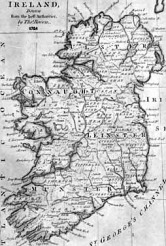 What
differentiates these seven individuals from other Irish born
musicians of the period is the fact that each of them achieved
great fame internationally. Their success was not only in Britain
but also in foreign countries where they were often the sole
Irish representative in a musical environment that was generally
dominated by Italian and French artists along with some Germans
and other nationalities.
What
differentiates these seven individuals from other Irish born
musicians of the period is the fact that each of them achieved
great fame internationally. Their success was not only in Britain
but also in foreign countries where they were often the sole
Irish representative in a musical environment that was generally
dominated by Italian and French artists along with some Germans
and other nationalities.
They were the first Irish born professionals to emerge on the
international classical music scene. Six were men, and one was
an attractive young female singer of the first rank. Their legacies
live on today! Four of these artists were born in Dublin, two
in Limerick and one in Waterford.
This blog is all about these remarkable individuals, their
lives, their music and performances and the recognition they
received as they first appeared professionally in Ireland and
London and then countries such as, France, Italy, Austria, Germany
and in America, Canada, Australia, New Zealand, South America,
Russia and other places.
Their music was not “Irish” music in the “traditional folk
music” sense. Their compositions and the music they performed
was primarily based on the classical Italian and French models
and to a lesser extent the German/Austrian classical musical
genre of the time.
Great musicians who became friends or associates in some manner
of these seven Irish artists included such luminaries as, Beethoven,
Weber, Rossini, Cherubini, Bellini, Donizetti, Mozart, Clementi,
Liszt, Thalberg, Moscheles, J. Strauss, Berlioz, Chopin, Auber,
Meyerbeer and Verdi.
London Bound
Like so many other Irish born artists and writers of the 19thcentury
and beyond, they were initially drawn to London where the opportunities
were more rewarding both financially and artistically. Some
of these Irish artists traveled far and wide in the pursuit
of their careers and financial rewards. Some never returned
to Ireland once they left. Others returned to great acclaim
and success in the land of their birth.
Recordings
All of these gifted Irish musicians were active long before
the recording industry as we know it today emerged in London,
Paris, Milan and New York from the 1890’s on. So their personal
performances, or their voices never had the benefit of being
recorded. However, their importance to musical history, apart
from being Irish born was such that their contributions and
reputations are still recognized internationally today.
Some of the works of the composers in the group, by reason
of their art can be heard on modern day CD recordings. The legacy
of our young Irish soprano is cast in time and place in the
reviews of her performances. We will never really know how she
sounded except for the thoughts expressed by reviewers in newspapers
and musical periodicals of the period, in the cities where she
performed around the Globe.
However, we can get a brief glimpse of our Irish prima donna’s
signature song, “Kathleen Mavourneen” and the style in which
it might have been sung during the 19th Century from a very
early recording (1905) by the leading soprano (Adelina Patti),
of the latter half of the 19th century— more on this later,
and on recordings.
The Growth of Classical Music in Ireland – Brief Background
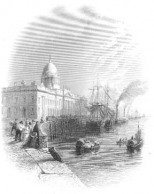 For
almost 800 years Ireland had been under British rule, until
1921. Over the centuries Dublin had become a major port and
center for British commerce and trade. It also had a strong
military base in the city. It was considered by some to be the
“second” city of the British Empire. By about the early 1700’s,
musicians and singing-actors (many of whom were continental
born) who had performed in London started to make the journey
across the Irish sea to Dublin… a total distance of about 300
miles between the two capital cities, to perform at one of the
many theatres then functioning in Dublin.
For
almost 800 years Ireland had been under British rule, until
1921. Over the centuries Dublin had become a major port and
center for British commerce and trade. It also had a strong
military base in the city. It was considered by some to be the
“second” city of the British Empire. By about the early 1700’s,
musicians and singing-actors (many of whom were continental
born) who had performed in London started to make the journey
across the Irish sea to Dublin… a total distance of about 300
miles between the two capital cities, to perform at one of the
many theatres then functioning in Dublin.
These multi-national travelling musicians and singers, introduced
new songs, orchestral and vocal pieces, cantatas and concertos
and also performed early works by various Italian composers
and the German born, composer, George Frideric Handel. On occasions,
later in the 19th century some of these musicians even extended
their tour of Ireland to give concerts in places such as, Cork,
Limerick, Kilkenny and Belfast. So classical music and opera
started to make a significant foothold on Irish soil around
this time.
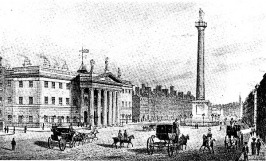 Dublin
was quite an affluent city with its large British military base
and wealthy Anglo-Irish residents with their Georgian homes
and townhouses. The city was continually in a rapid expansion
mode. This included a “wide streets” planning improvement program
and the erections of many new beautifully designed large building.
A number of these buildings still exist in Dublin today. By
the close of the 18th century the city had a population of about
200,000 or so, residents. Its lifestyle was reflective of London
in many ways.
Dublin
was quite an affluent city with its large British military base
and wealthy Anglo-Irish residents with their Georgian homes
and townhouses. The city was continually in a rapid expansion
mode. This included a “wide streets” planning improvement program
and the erections of many new beautifully designed large building.
A number of these buildings still exist in Dublin today. By
the close of the 18th century the city had a population of about
200,000 or so, residents. Its lifestyle was reflective of London
in many ways.
Music flourished because of the city’s many theatres and the
associated lifestyle of its residents. The Irish themselves
embraced classical music early on, to the point where traditional
Irish folk music was eventually replaced, at least in Dublin.
Indeed, perhaps the last great traditional “Irish music” event
of that period was the Belfast Harp Festival of 1792.
Music and Charitable Events
Classical music in Dublin was very much a mirror image of London’s
taste, which had regular Italian opera seasons and symphonic
concerts at various times of the year. A number of London music
publishing houses had also opened branches in Dublin to cater
to the affluent Anglo-Irish Ascendancy who controlled much of
the musical activity in the country. The Ascendancy tied musical
performances in many instances to charitable events, such as
fundraising for hospitals, orphanages, prisons etc. There were
around twenty such organizations that had been chartered in
Ireland for this express purpose by the 1790s.
Ireland’s Landmark Musical Event – the “Messiah”
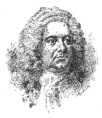 Towards
the end of the year 1741, one of the most famous musician in
Europe of the period, George Frideric Handel (who had
lived in London for many years) decided to visit Dublin. Handel
was apparently somewhat discontented with recent London reviews
and the treatment of some of his works. Handel’s visit to Ireland
was immortalized in April 1842 when he directed the world premiere
of his latest work, the “Messiah” at the Great
Music Hall in Fishamble Street in Dublin. A London born musician,
Matthew Dubourg who was Master of the State
Towards
the end of the year 1741, one of the most famous musician in
Europe of the period, George Frideric Handel (who had
lived in London for many years) decided to visit Dublin. Handel
was apparently somewhat discontented with recent London reviews
and the treatment of some of his works. Handel’s visit to Ireland
was immortalized in April 1842 when he directed the world premiere
of his latest work, the “Messiah” at the Great
Music Hall in Fishamble Street in Dublin. A London born musician,
Matthew Dubourg who was Master of the State  Music
of Ireland led the orchestra for the premiere performance
which was in aid of both Mercer’s Hospital and several
prisons in the city. Apparently around 700 people crowded into
the Music Hall for the event, which was highly successful.
Music
of Ireland led the orchestra for the premiere performance
which was in aid of both Mercer’s Hospital and several
prisons in the city. Apparently around 700 people crowded into
the Music Hall for the event, which was highly successful.
Handel gave several other performances at various venues. His
visit to Ireland lasted several months and it had the effect
of really putting Dublin on the map for European musical artists
of all types. It also set the tone for musical life in Dublin
for the next 100 years or more.
Music at Christ Church Cathedral and St. Patrick’s Cathedral
Both of these Anglican (Church of Ireland) Cathedrals in Dublin
provided musical training, had large choirs and important musicians
on staff for more than 150 years. Their members worked closely
withlocalorchestras and with Handel when he was performing his
various works in Ireland. Their contribution to musical life
was unparelled.
Rotunda Concert Rooms, Dublin
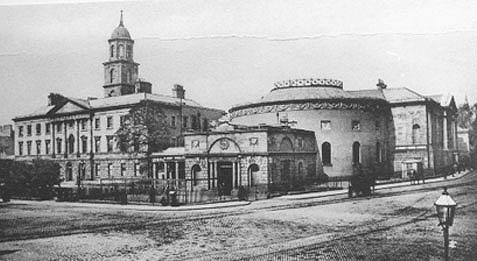 The
Rotunda Hospital with its adjacent Concert Rooms and Garden
was formally opened in central Dublin in 1757. The very special
Rotunda Concert Rooms, with its beautiful main room curvature,
recesses and chandeliers was reportedly able to accommodate
up to 2,000 people because it had no central support columns,
which left the entire floor space free for its patrons. The
building was originally designed for fund raising concerts in
aid of the hospital. For the next one-hundred years or so the
Rotunda Concert Rooms would play an important part in the musical
life of Dublin. At least five of our seven unique Irish musicians
performed there during the first half of the 19th century.
The
Rotunda Hospital with its adjacent Concert Rooms and Garden
was formally opened in central Dublin in 1757. The very special
Rotunda Concert Rooms, with its beautiful main room curvature,
recesses and chandeliers was reportedly able to accommodate
up to 2,000 people because it had no central support columns,
which left the entire floor space free for its patrons. The
building was originally designed for fund raising concerts in
aid of the hospital. For the next one-hundred years or so the
Rotunda Concert Rooms would play an important part in the musical
life of Dublin. At least five of our seven unique Irish musicians
performed there during the first half of the 19th century.
The Rotunda Concert Rooms buildings still extant today. Sadly,
despite the incredible musical history associated with the venue
it is virtually derelict (2008). Some of the greatest musical
performers in history have given concerts there.
Considerations should be given to the Rotunda building
being declared a historic landmark and fully restored as
a musem to Ireland’s great classical musical heritage and the
people who performed there. A permanent display should be created.
There is pleanty of original material available for a display.
The First Mozart Operas
In 1811 Dublin saw it’s first Mozart opera, Cosi fan tutte.
Excerpts from other Mozart operas were also performed around
this time. Later in 1819 Mozart’s, Don Giovanni,
and Le Nozze di Figaro were also performed. Rossini’s
Il barbiere di Siviglia was first performed in
1829, alsong with three other Rossini operas, Il Turco
in Italia, La gazza Ladra and Otello.
In 1821 the new 3,000 seat Theatre Royal opened in Hawkins
Street, Dublin. King George 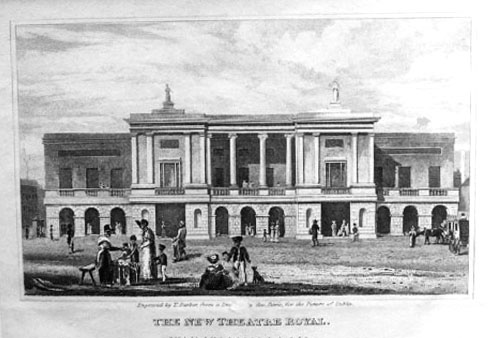 IV
on a visit to Ireland attended a Sheridan play at the theatre
the year it opened. In 1827 an English language version of Weber’s
opera Der Freischutz was performed there, with
considerable success. In a short period of years the Theatre
Royal would become the main venue for opera, concerts and other
entertainment in Dublin until it burned down in 1880. Some of
our unique musicians performed in the orchestra and on the stage
of the Theatre Royal during the 19th century.
IV
on a visit to Ireland attended a Sheridan play at the theatre
the year it opened. In 1827 an English language version of Weber’s
opera Der Freischutz was performed there, with
considerable success. In a short period of years the Theatre
Royal would become the main venue for opera, concerts and other
entertainment in Dublin until it burned down in 1880. Some of
our unique musicians performed in the orchestra and on the stage
of the Theatre Royal during the 19th century.
Renowned Performers visit Dublin – Catalani, Pasta, Thalberg,
Pagannini and Liszt
In 1807 Angelica Catalani, one of Italy’s most renowned
and highest paid singers first arrived in Dublin to give a concert. She returned several times
after that making her final visit in 1823. Another great Italian
soprano, Giuditta Pasta visited Dublin towards the end
of 1827 as a guest of Lady Morganin her Kildare Street
home. Within a few years, Pasta was to create the title roles
in Vincenzo Bellini’s La Sonnambula and Norma
in Milan. She would also become a close associate of one of
our unique Irish musicians.
arrived in Dublin to give a concert. She returned several times
after that making her final visit in 1823. Another great Italian
soprano, Giuditta Pasta visited Dublin towards the end
of 1827 as a guest of Lady Morganin her Kildare Street
home. Within a few years, Pasta was to create the title roles
in Vincenzo Bellini’s La Sonnambula and Norma
in Milan. She would also become a close associate of one of
our unique Irish musicians.
By 1830 after visiting London Italian opera troupes included
Dublin and other Irish cities on their scheduled. It wasn’t
long before Italian operatic troupes and other musicians regularly
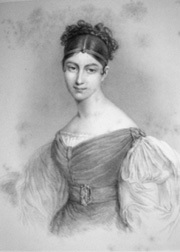 began
traveling to Cork, Limerick, Kilkenny, Belfast and other places
after their initial performances in Dublin. The legendary Italian
violinist, Nicola Pagannini performed in Dublin in 1831.
In 1836, perhaps the most prominent singer in Europe, Maria
Malibran, was scheduled to visit Dublin for a concert, however
fate took a hand and she died tragically in England from an
accident shortly before she was due to travel to Dublin. In
1838 the renowned pianist, Sigismond Thalberg gave a
concert, in the company of one of our returning Irish artists.
began
traveling to Cork, Limerick, Kilkenny, Belfast and other places
after their initial performances in Dublin. The legendary Italian
violinist, Nicola Pagannini performed in Dublin in 1831.
In 1836, perhaps the most prominent singer in Europe, Maria
Malibran, was scheduled to visit Dublin for a concert, however
fate took a hand and she died tragically in England from an
accident shortly before she was due to travel to Dublin. In
1838 the renowned pianist, Sigismond Thalberg gave a
concert, in the company of one of our returning Irish artists.
In 1841, the great pianist and composer, Franz Liszt gave
a concert in the Rotunda. Liszt also 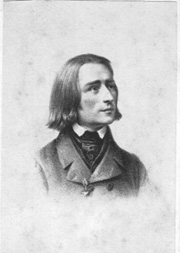 performed
in Kilkenny, Cork and Limerick. Our young Irish soprano participated
in the Dublin concert.
performed
in Kilkenny, Cork and Limerick. Our young Irish soprano participated
in the Dublin concert.
From around 1830 onward Dublin saw regular performance of
Italian Opera at the Theatre Royal, with international artists
such as, Giuseppi de Benis, Antonio Sapio, Signora Kintherland
and others. Over the next decades some of the greatest singers
in Europe, appeared in opera including, Luigi Lablache, Giulia
Grisi, Giovanni Mario, Fanny Persiani, Giovanni Battista Rubini
and Jenny Lind. They performed in works by, Rossini,
Donizetti, Bellini, and later Verdi at the Theatre Royal. A
number of our special Irish musicians became life-long friends
and associates of these artists.
In 1834 the Antient Concert Rooms opened in Dublin as a new
venue for large vocal and instrumental concerts. This was followed
in 1848 by the Royal Irish Academy of Music which still functions
today. There were also theatres functioning in Wexford, Waterford,
Cork, Limerick, Galway, Kilkenny, Belfast and other cities and
towns in Ireland by the early decades of the 19th century. There
were severl theatre orchestras, and many music teachers in Dublin
and elswhere in Ireland.
It was in this overall environment that our seven unique
Irish musicians emerged for their early training and first professional
engagements. Some of them were destined to become closly associated
with a number of the above distinguished continental artists
during the early to middle of the 19th century.
Selected Bibliography
- Music in Nineteenth-Century Ireland, Editors, Michael
Murphy and Jan Smaczny
- Keeper’s Recital – Music and Cultural History in Ireland,
1770-1970, by Harry White
- Rotunda Music in Eighteen-Century Dublin, by Bryan
Boydell
- A Dublin Musical Calendar 1700-1760, by Bryan Boydell
- Music in Ireland 1848-1998, Edited by Richard Pine
- To Talent Alone: The Royal Irish Academy of Music,
by Charles Acton & Richard Pine
- Anglo-Irish Music 1780-1830, by Ita M. Hogan
- Annals of the Theatre Royal Dublin, by R. M. Levey
and J. O’Rorke
- Irish Musical History, by W. H. Grattan Flood
- Opera in Dublin 1705-1797, by T. J. Walsh
- Opera in Dublin 1798-1820, by T. J. Walsh
- Opera in Old Dublin 1819-1838, by T. J. Walsh
- Catherine Hayes – The Hibernian Prima Donna, by Basil
Walsh
- Michael W. Balfe – A Unique Victorian Composer, by
Basil Walsh
- First Nights: Five Musical Premieres (Handel’s Messiah),
by Thomas F. Kelly
- Irish Classical Recordings; A Discography of Irish Art
Music, by Axel Klein
- Liszt: My Travelling Circus (covers Liszt’s visit
to Ireland in 1841), by David Allsobrook
Seven International Pioneering Irish Musicians/Performers
You will be probably be amazed by the achievements of these
unique Irish born musicians.
(NOTE: Since Ireland was under British rule during the period
in question Irish born musicians are generally referred to as
being “British” which was usually how they were perceived while
on the continent or performing in Britain.)
These brief biographies are featured chronologically, based
on the year of birth.
Michael Kelly (1762-1826) - Singer, Composer and Theatre
Manager.
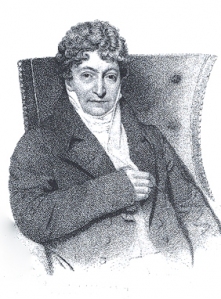 Michael
Kelly (or O’Kelly)was born in Dublin in Dec 1762. He died in
Margate, England Oct 1826. He was born into a musical family.
His father Thomas Kelly was also a wine merchant and
Maser of Cermonies at Dublin Castle where he managed special
functions.
Michael
Kelly (or O’Kelly)was born in Dublin in Dec 1762. He died in
Margate, England Oct 1826. He was born into a musical family.
His father Thomas Kelly was also a wine merchant and
Maser of Cermonies at Dublin Castle where he managed special
functions.
Kelly’s early musical training and vocal studies initially
took place in Dublin. At the youthful age of 15 in 1777, he
performed in Italian opera in Dublin with a visiting opera troupe.
On the advice of one of the Italian singers he decided to go
to Naples for further study departing Dublin in May 1779.
After a few years study and various operatic roles in Naples
and elswhere he made his way to Venice to perform in opera there.
Venice was then under Austrian Hapsburg rule and linked closely
to Vienna. While performing in Venice he was invited by the
Austrian Ambassador, Count Durazzo to sing at the Royal Court
Theatre in Vienna, along with the British soprano, Nancy
Storace.
By now Kelly had performed in many operas throughout the Italian
states— he was a professional singer and he had also become
fluent in the language. He made his debut in Vienna in April
1783 in Salieri’s opera, La scuola de’ gelosi along side Nancy
Storace.
During these years Kelly had gained great experience as a singer.
However, perhaps his most significant contribution to classical
music as an Irishman is the fact that during the four years
he spent in Vienna he became a close friend and associate of
the renowned composer, Wolfgang Amadeus Mozart.
The relationship between the two musicians grew profesionally
and socially and it eventually led to the Irishman, Kelly being
offered the roles of Don Basiloo and Don Curzio in the world
premiere of Mozart’s now famous opera, Le Nozze di Figaro
in Vienna, in May 1786. Storace was also in the performance.
An interesting realted fact— is that Kelly’s name was shown
as “Occhely” in the original Mozart manuscript (1786) for the
opera! While in Vienna, Kelly was consideded an important member
of the Italian Opera there.
Michael Kelly and Nancy Storace historically were the only
two British singers to have sung in the premiere of a Mozart
opera.
After Vienna, Kelly visited Mozart’s father, Leopold Mozart
in Salzburg before continuing on to London with Nancy Storace
in 1787, where he appeared in musical plays at the Drury Lane
theatre. For almost twenty-years he had a successful career
as a vocalist in England and Ireland. During this period he
also gave concerts and had his first compositions staged. Subsequentally,
he took over management of the important King’s Theatre where
most Italian Opera was performed in London. He also became the
director of music at the Theatre Royal in Drury Lane in London.
In Dublin he mounted seasons of Italian operas.
In 1802 at the age of 40, he ventured into the wine business,
opening a shop and music salon in Pall Mall, London. He was
not successful and eventually his London business went into
bankruptcy in September 1811, while he was in Dublin performing.
His troubles continuuedtomount and rumors also began to circulate
that some of the musical works Kelly has published over the
years were possibly not his own compositions but music of other
composers which he had brought with him from Italy.
One of his contemporaries, Richard Brinsley Sheridan when
questioned about his fellow Dubliner was heard to remark with
some amusement "Perhaps he should inscribe over his shop,
‘Composer of Wines and Importer of Music.’"
Kelly went on to compose a vast amount of songs in English,
Italian and French which were published in London during the
early 19th century. One of his most durable compositions was,
an opera called, Blue Beard (1798). His last stage appearance
was in Dublin in 1811, after which he decided to retire. He
was almost 50 years old. In retirement he wrote a monumental
(170,000 words!) two-volume memoir with the assistance of a
‘ghost’ writer, T. Hood. The memoir is still available today.
The memoir contains some fascinating information about Vienna
and the time of Mozart.
His association with Mozart brought him great fame and a place
in musical history. However, many of the songs he wrote were
very successful in their day. His songs became popular not only
in Britain and Ireland but also in America. His tenor voice
was said to have had great power and a wide range with a solid
top. He was also considered a good musician. He had a likable
personality socially and he acquired many friends over the years.
Unfortunately, none of his music has been recorded as far as
it is known. Michael Kelly died in Margate, England in October
1826. He was an important musician and man of the theatre and
quite famous in his day, particularly in London and Dublin.
He was also an intimate friend of R. B. Sheridan and
the Irish poet Thomas Moore and a noted bon-vivant!
Kelly’s life was fascinating enough for the 20th century writer
Naomi Jacobs to publish a novel in 1950, The Irish Boy, based
on his life.
Bibilography:
- Reminiscences of Michael Kelly of the King’s Theatre
and Theatre Royal Drury Lane, by Michael Kelly – two volumes
– London 1826. Reprinted 1968
- The New Grove Dictionary of Opera, editor, Stanley
Sadie - 1992
- Opera in Dublin 1705-1797 by T. J. Walsh – 1973
- Opera in Dublin 1798-1820, by T. J. Walsh
- Irish Musical History, by W. H. Grattan Flood – 1905
- Mozart and His Circle – A Biographical Dictionary
by Peter Clive -1993
- Music in Britain: the Romantic Age 1800-1914 - Editor,
Nicholas Temperley – 1988
- Leigh Hunt and Opera Criticism, by Theodore Fenner
– 1972
- The Rise of English Opera, by Eric Walter White –
1951
- Opera in London – Views of the Press 1785-1830 by
Theodore Fenner – 1997
- The King’s Theatre 1704-1867, London’s First Italian
Opera House by Daniel Nalbach – 1972
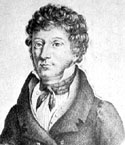 John
Field (1782-1837) - Pianist and Composer
John
Field (1782-1837) - Pianist and Composer
John Field was born in Dublin in Jul 1782. He died in Moscow,
Russia in Jan 1837. He was the son of a violinist and music
had been an occupation in the Field family for several generations.
Field first studied music with his father, Robert Field
a violinist in an orchestra at one of the city theatres.
His son. John showing exceptional talent at age nine in 1791,
was placed under the tutelage of the renowned Italian musician
and composer, Tommaso Giordani who was then living and
teaching in Dublin.
Field made his official debut at age nine as a pianist at the
Rotunda Concert Rooms in Dublin on March 24, 1792 in a series
of three Lenten concerts that were arranged by Giordani under
the title ”Spiritual Concerts.”
A newspaper report of Field’s performance said “…the concerto
on the Piano Forte by Master Field was really an astonishing
performance by such a child, and had execution far beyond what
could have been expected.” Young Field performed at all three
concerts, presumabely with equal success.
He continued to perform at other concerts in the Rotunda and
in April of the same year he played an original work by his
teacher Giordani which the teacher had composed specially for
him. Later on, in 1795 Field was important enought to have had
some of his early Dublin compositions for piano published in
London.
In the summer of 1793, the young prodigy’s father moved the
family to Bath in England where he took-up a position in the
orchestra as a violinist. Their stay there was short for whatever
reason as a result the family moved on to London, possibly sometime
early in 1794.
Field’s father still recognizing his young son’s developing
talents made the decision to place John with the well established
Muzio Clementi, a pianist and composer who was then perhaps
the most important teacher of piano in London. the decision
was an expensive one as Clementi’s fees were very significant.
Clementi also manufactured pianos and had a music salon in London
where he sold pianos and sheet music in addition to giving lessons
to selected pupils. As part of his apprentiship requirements
young Field was required to demonstrate the instruments for
prospective clients.
Through this exposure Field gained recognition and prominence
as a soloist. He also gave concerts at which he played some
of his own compositions. His first major composition, a concerto
was composed in 1798 and performed early in 1799. He was now
almost 17 years old and maturing as a professional artist.
Annually, Clementi made extended business trips to Paris, Vienna,
Berlin, St. Petersburgin Russia and to other cities during which
he promoted the sale of his pianos and music. He took Field
with him as his assistant and for demonstrations.
Over time Field built a strong international reputation as
an excellent pianist and composer. In time, Field’s talents
were always in demand from Russia to London from Paris to Vienna
and lots of places in between because of his brillance and style.
By 1800 Field had technically completed his apprenticeship
requirements with Clementi. In 1803, Field decided to stay on
in St. Petersburg which was the home of the Russian Royalty
where there was much opportunity for sponsorship, teaching and
concert activity. He had also learned French, which was the
language of the Russian Royal Courtand aristocracy. He traveled
to places such as Riga, Mitau (now in Lativa) and Moscow and
later returned to Paris, Vienna and London to give concerts
with great acclaim.
While in Russia, Field also had the distinction of giving piano
lessons to the future great Russian composer, Michael Glinka,
who is considered the father of Russian opera.
In St. Petersburg in May 1810 he married a French student,
possibly one of his more gifted pupils named, Adelaide Victoria
Percheron. The marriage was not successful given Field’s
eccentric lifestyle. While still married he had a romantic affaire
with a Mlle. Charpentier by whom he had a son named Leon in
1815. Field developed a strong affection for the boy. Leon later
traveled with his father in Italy and other places. He also
became a successful opera singer in his own right.
However, Field also had a son Adrien in 1819 by his legal wife,
Adelaide . In time, his wayward double lifestle supported by
his large income from teaching, concerts and compositions— eventually
resulted in separation from his wife Adelaide in Moscow in 1821.
Field continued to travel extensively around Europe giving
concerts to sold out houses, not only in Paris, Vienna and London
but also in Brussels, Marseilles, Lyons, Geneva, Milan and Naples.
He achieved great fame, particularly in London and Paris where
the young Polish pianist Frederic Chopin attended his
concerts, no doubt curious about Field’s new composition “the
Nocturne” which Field had first composed and performed in Russia
in 1814. His talents were particularly admired by composer,
Robert Schumann and composer and pianist, Franz Liszt.
His later years were plagued by excessive alcohol, a decline
in his abilities to perform and later, by cancer. He did have
a warm reunion with his mother in the 1820’s. She was now 78
years old and living in London. He had provided for her financially
over the years but somehow he had not taken the time to visit
her in over 30 years.
He died in Moscow at age 54 in January 1837. A gravestone marks
his final resting place in the Vedensky Cemetry in Moscow. Having
left Dublin with the family in 1793 he never returned to Ireland,
not even to give a concert.
Fortunately John Field music lives on today. His output was
extensive. It included concertos for piano and orchestra, many
nocturnes, Chamber music, rondos, fantasies, dances, songs and
other works. His piano concertos and nocturnes have been widely
recorded and are played frequently on radio and at live concerts.Throughout
Europe during his lifetime he was accredited with being the
composer who first developed the Nocturne format in music. His
compositions for piano were to influence a whole new generation
of pianists that came after Field, people such as, Chopin,
Mendelssohn, Liszt, Thalberg, Moscheles and others.
Selected Recordings/Selected Works:
Nocturnes (Piano) Telarc CD 80199 – 15 Nocturnes – John O’ Connor,
Pianist
Telarc CD 80290 – Sonatas and Nocturnes (not incl. in above)
– John O’Connor, Pianist
Concertos (Piano & Orchestra) Telarc CD 80370 – Piano
Concertos, No. 2 & No. 3 – John O’Connor, Pianist and the Scottish
Chamber Orchestra conducted by Sir Charles Mackerras.
Bibliography:
- The Life & Music of John Field 1782-1837 by Patrick
Piggott -1973
- Dublin Historical Record Vol. 35, No.4 Sep 1982:
Article – John Field 1782-1837, by Terry de Valera -1982
- John Field – Inventor of the Nocturne by William
H. Gratton Flood – 1920 (Pamplet)
- John Field, by A. A. Nikolayev/translated by H. M.
Cardello – 1973
- Music in Britain: the Romantic Age 1800-1914 - Editor,
Nicholas Temperley- 1988
Thomas Moore (1779-1852) - Poet, Composer and Singer.
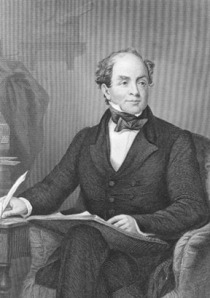 Thomas
Moore was born in Dublin in May 1779. He died in Wiltshire,
England in February 1852. His father, John Moore was
from Kerry— his mother, Anastatia was from Wexford. The father
ran a modest grocery shop in Aungier Street in central Dublin.
Thomas
Moore was born in Dublin in May 1779. He died in Wiltshire,
England in February 1852. His father, John Moore was
from Kerry— his mother, Anastatia was from Wexford. The father
ran a modest grocery shop in Aungier Street in central Dublin.
While growing-up in Dublin he studied music and piano. He was
also well educated in the classics in private schools in Dublin.
He entered Trinity College, Dublin in 1794, graduating wit a
B. A. from the University in 1799. He then moved to London where
he studied Law. However, his motivations from the beginning
led him towards the literary and musical fields.
His first literary work, Ode to Anacreon based on the Greek
poet’s Anacreon writings, was published with great success in
1800. It was a work celebrating wine, women and song— as a result
Moore developed a somewhat devilish reputation in London. The
work was dedicated to the Prince of Wales.
With the publications of the first of the ten volumes of Moore’s
Melodies in 1808, Thomas Moore’s fame in the musical world
was secured both in Britain and on the continent. Some considered
the Melodies to be Moore’s greatest lifetime work.
However, Moore’s talents were always more literary than musical,
although by his own account it was really music that caused
him to start writing poetry.
Moore’s next endeavor, The poetical works of the late Thomas
Little, published in 1801 continued in the same mode, although
it was not quite as successful. His reputation grew to the extent
that he was invited to the drawing rooms and salons of Society,
where his vocal and musical attributes were also praised by
the elite of London.
In 1805, having spent some time on the Island of Bermuda as
a British Government representative he took time off to travel
in America and Canada. Meanwhile, his assistant in Bermuda proceeded
to mismanage the Government funds and in the process Moore was
implicated.
To avoid imprisionment in Britain Moore went to live in continental
Europe instead of returning to Britain. During this period he
spent extensive time traveling in Italy with his long-time friend,
Lord Byron. Byron gave Moore his memoirs to “do with
them as he wished.” Ultimately Moore, along with his publisher,
John Murray, for whatever reason decided to burn Byron’s manuscript—
preferring instead to write his own biography about his gifted
friend based on Byron’s letters and Journal.
Additionally, Moore also eventually managed to deal with his
Bermuda financial obligations and was able to return to London
and reside there.
In 1808 the first edition of ten volumes of Moore’s Melodies
was published, the arrangement was by the Irish musician John
Stevenson. The poetry was by Moore, and the music for the
songs was adapted from old Irish Folk tunes which had been collected
and put on paper by Edward Bunting.
Eventually, the subsequent nine volumes which were published
through 1834 contained more than 130 songs. Some of the more
famous being, ‘Tis the Last Rose of Summer,The Harp that
Once Through Tara’s Halls, The Minstrel Boy, Oft In The Stilly
Night and Erin the Tear and the Smile.
In 1817, Moore wrote Lalla Rookh, an extensive oriental
romantic poetic work which became very popular and also the
subject for an opera and other musical compositions by various
European composers, such as Gaspare Spontini, Felicien David,
Hector Berlioz and Anton Rubinstein and in Britain,
Charles V. Stanford and Granville Bantock.
Throughout the years that have followed many new editions of
Moore’s Melodies have been published including one particularly
important arrangement by the Irish composer, Michael W. Balfe
in 1859, in London and later, another by another Irish born
composer, Charles V. Stanford. Many of the songs had
strong patriotic themes which also made them very popular in
America. Moore’s recognition continued to grow, not only in
Britain but also throughout continental Europe and in America,
Canada Australia and New Zealand. Selected songs from his Melodies
were also translated into various foreign languages. The far
flung fame and popularity of the Melodies resulted in him gaining
a significant income from his work.
His fame placed him in the front rank of of British Society.
On the continent, renowned composers such as, Ludwig van
Beethoven, Hector Berlioz and Robert Schumann produced
selected arrangements of songs from the Melodies with translated
text. And, perhaps Moore’s most famous song of all, ‘Tis
the Last Rose of Summer became the main theme music for
the opera Martha by Friedrich von Flotow which had its
premiere in Vienna in 1847.
In addition to his Melodies, Moore also composed several
other songs. His songs and selected other works became quite
popular with singers of the period, such as the great Irish
soprano, Catherine Hayes and to a lesser extent, her
renowned contemporary and friend, Jenny Lind. At the
very dawn of the recording industry in 1903 another great 19th
century soprano Adelina Patti recorded Moore’s The
Last Rose of Summer which is still available on CD today.
Most of the great sopranos in history have sung this particular
piece at concerts.
On the personal side, Moore was married to Elizabeth “Bessie”
Dyke in 1811. Her father was from Cork and her mother was
English. They had four daughters and two sons. Tragically all
of their children died before the parents, which was not uncommon
during the 19th century. Moore died in 1852 and his wife followed
him in 1865. He’s buried at Bromham Cemetry, Wiltshire
He returned to Ireland many times throughout his life, particularly
when his mother was alive.
Selected Recordings/Selected Works
Thomas Moore’s Irish Melodies – The Complete Collection
-
Recorded in Dublin in 2008 for the “My Gentle Harp”
program celebration of the 200th anniversary of the publications
of the Melodies.The Michael Balfearrangements have been
used for the majority of the songs. There are a total of 139
numbers including supplements and extra tracks with numerous
vocalists and piano accompanyment by Una Hunt and Mairead Hurley.
Claddagh Records 6 CD Set TMF2008 101-106 - www.claddaghrecords.com
Dear Harp of My Country, James Flannery, Tenor, Janet
Harbison, Irish Harp ESS.AY Recordings – 2 CD Set 1057/58.
Includes 49 of the Melodies/Songs.
Romancing Rebellion, 1798 and the Songs of Thomas Moore-
Kathleen Tynan, Soprano, Dearbhla Collins, Piano – Includes
song arrangements by Beethoven, Berlioz, Stanford and others.
22 items are included in this 1 CD Set. Black Box Music CD
BBM1022
Opera Martha - complete opera with German/English
libretto sung by the Bavarian State Opera with soloists conducted
by Robert Hager Note: The dominent music theme in the
opera is based on Moore’s song, The Last Rose of Summer.
EMI CD (2) Set
Bibliography
- The Journal of Thomas Moore 1818-1841 by Thomas Moore
– 1964
- The Harp that Once… Tom Moore and the Regency Period
by H. Mumford Jones – 1937
- Minstrel Boy, A Portrait of Tom Moore by L. A. G.
Strong – 1947
- Leigh Hunt and Opera Criticism, by Theodore Fenner
– 1972
- Bard of Erin: The Life of Tomas Moore, by Ronan Kelly
– 2008
- Music in Britain: the Romantic Age 1800-1914 - Editor,
Nicholas Temperley – 1988
- New Grove Dictionary of Opera – Editor, Stanley Sadie
– 1992
- The Oxford Dictionary of Music – 1994
George Alexander Osborne (1806-1893),
Pianist, Composer and Teacher.
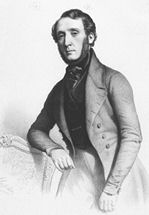 George
Alexander Osborne was born in Limerick in September 1806. He
died in London in November 1893. He came from a musical family.
He studied music initially with his father, George W. Osborne
who was the organist at the Limerick Cathedral and a teacher
of piano.
George
Alexander Osborne was born in Limerick in September 1806. He
died in London in November 1893. He came from a musical family.
He studied music initially with his father, George W. Osborne
who was the organist at the Limerick Cathedral and a teacher
of piano.
During a visit to an Aunt in Brussells in 1825 he was introduced
to the Prince de Chimaywho was influential in helping him become
the musical instructureto the Prince of Orange. Brussels and
the area know as Belgium today at that time was under Dutch
rule. He also met the violinist Charles A. de Beriot
during his stay in the city. Sometime later, possibly around
1826 and most probably at de Beriot’s suggestion he went to
Paris to study music and the piano with Johann Pixes
and Friedrich Kalkbrenner. The latter was one of the
foremost teachers in Paris at the time.
While in Paris he became associated socially and professionally
with such immortal musical personalities as, Hector Berlioz,
Franz Liszt, Daniel Auber, Luigi Cherubini, Felix Mendelsshon
and Gioachino Rossini. It was during this period
that he also met the Irish musician, Michael W. Balfe who
was a protoge of Rossini and studying to become a singer in
Paris. The two Irishmen became lifelong friends.
He later became a close friend of the pianist, Frederic
Chopin. During these years in Paris Osborne, gave concerts
and played at public performances withChopin and others, always
receiving excellent reviews in the musical press. At Chopin’s
Paris debut in February 1832 Osborne participated along with
Chopin and others in a polonaise for six pianos by Kalkbrenner.
In 1830 he had his first musical compositions published. These
included selected waltzes and fantasies based on excerpts from
Rossini operas. He would later do the same with some of Balfe’s
operas. He also became a teacher. His most important pupil during
this period was the future orchestra leader and conductor, Charles
Halle.
His relationship with the composer, Hector Berlioz was
particularly close and possibly he first introduced the Irish
actress, Harriett Smithson to Berlioz when she was in
Paris performing Shakespeare works at which Osborne assisted
musically. Berlioz and Smithson afterwards married.
Musically, Osborne and de Beriot were to collaborated on many
duets for piano and violin over the years, not only composing
pieces together but also performing together. One of their most
famous pieces was a duet arrangement from Rossini’s momumental
1829 opera, Guillame Tell. He also met the most famous singer
in Europe at the time, the mezzo-soprano, Maria Malibran
whom he accompanied on occasions and who eventually married
de Beriot.
In 1840 Osborne married Lucy South Adams in Paris at
the British Embassy. Her family was from Devon in England. They
had three children—a son and two daughters. As far as it is
known they were never active in the musical profession. Osborne’s
wife died in London in 1858. He remarried in 1860 to a Grace
Octavio who died in 1877 in London. There were no children
from the second marriage.
Early in 1842, Osborne and his wife Lucy welcomed into their
home the young Irish soprano, Catherine Hayes and her
mother Mary Hayes, who were also from Limerick. Catherine Hayes
came to Paris on the recommendation of the great basso, Luigi
Lablacheto study with the eminent vocal teacher Manuel P.
Garcia, the brother of Malibran and her sister also a singer,
Pauline Viardot Garcia. For the next two year Catherine
Hayes stayed with the Osbornes. The young soprano was destined
for great fame in Italy, Britain, America and Australia. Through
much of her short life and brilliant career George Alexander
Osborne was her friend, he accompanied her on tours, was present
at her wedding and was there at her early demise a few years
later.
Osborne’s younger sister, Elizabeth “Bessie” was also
in Paris studying singing with the famous tenor and teacher
Giulio Bordogni around this time. Bessie later made her
debut in London in the principal role in Bellini’s La Sonnambula
with considerable success. After her marriage she gave up her
singing career.
In 1844 with political unrest in Paris the Osbornes moved to
London. In London Osborne continued his compositions. In 1847
he published perhaps his most famous work for piano, La pluie
de perles (Shower of Pearls). Its fame and great
popularity as a salon piece earned Osborne a significant income,
both in Paris and london and no doubt elsewhere. by the 1850s
osborne was much in demand for concerts in London and other
places in the British Isles. Around this time he also composed
two operas, Sylvia and The Forest Maiden. However, it
appears that neither was ever produced.
Osborne lived a long life. During his latter years he was a
director of the Philharmonic Society in London, a position
he later resigned. He also became a director at the Royal
Academy of Music. He stayed active musically almost up until
his passing. He also made occasional visits to Dublin where
he still had several friends from his early days. On one of
these occasions he was elected as a member of the Royal Irish
Academy of Music.
Osborne died at his home in London in November 1893. He is
buried at Highgate Cemetery in London.
Selected Recordings/Selected Works
Shower of Pearls – The Music of George Alexander
Osborne – CD - 1 Disc
La Pluie de perles, Valse brillante, op. 61 – piano
Ireland (Fantasia on favorite Irish airs) – piano
Sonata for piano and ‘cello in B flat major
Isabella Valse, op. 34 – piano
Evening Dew, Morceau de salon, op.90 – piano
Fantasia on Balfe’s opera The Rose of Castile – piano
Trio no. 3 in G. op. 52 in G
RTElyric CD 103 (1 Disc/12 tracks) – Una Hunt piano,
Justin Pearson, cello
Fallen Leaves – from an Irish Album -includes piano
music by various early Irish composers (Field, Wallace, Stanford,
Cogan, Esposito, Geary, Osborne, Moran), two Osborne tracks
as follows:
La Nouvelle Pluie de Perles - G. A. Osborne
Nocturne Pauline - G. A. Osborne
RTElyric – CD 109 – 16 tracks.
Bibliography
- British Musical Biography- Brown & Stratton – 1889
- Musical Coincidences and Rememberences (Paper) London
1883 – G. A. Osborne – 1883
- Notes from CD 103 (above) by Una Hunt – 2004
- Catherine Hayes – The Hibernian Prima Donna, by Basil
Walsh – 2000
- The Mirror of Music 1844-1944 -2 vols., by Percy
A. Scholes – 1947
- Dictionary of Music and Musicians (1450-1889), edited
by Sir George Grove – 1889
Michael William Balfe (1808-1870), Singer, Composer
and Conductor
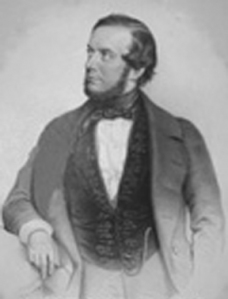 Michael
W. Balfe was born in Dublin in May 1808. He died at his home
in Ware, Hants (outside London) in October 1870. His father,
M. William Balfe was a dancing master and violinist who offered
classes in Dublin and Wexford at various times of the year.
Young Balfe made his first public appearance as a soloist at
age nine at Dublin’s Rotunda Concert Rooms in May 1817. He later
participated in other concerts at various venues in Dublin.
Michael
W. Balfe was born in Dublin in May 1808. He died at his home
in Ware, Hants (outside London) in October 1870. His father,
M. William Balfe was a dancing master and violinist who offered
classes in Dublin and Wexford at various times of the year.
Young Balfe made his first public appearance as a soloist at
age nine at Dublin’s Rotunda Concert Rooms in May 1817. He later
participated in other concerts at various venues in Dublin.
He had his first musical composition, a song, The Lover’s
Mistake published in Dublin in December 1822.
Balfe initially studied music and the violin with his father
and later with a prominent orchestra member at one of Dublin
theatres. On the death of his father in January 1823 Balfe went
to London where he joined the orchestra at the Theatre Royal,
DruryLane. In March that year he performed a violin solo at
a concert at the Theatre Royal which was conducted by the important
musician, Sir George Smart. His review was generally
good, focusing more on his youth and potential rather that his
actual performance.
During this period his voice had matured as a baritone and
ever resourceful Balfe decided to take on the operatic role
of Capser in a English version of Weber’s Der Freischutz,
in Norwich. It turned out to be a disaster for him because of
stage fright. The experience didn’t have any lasting effects
on the young musician.
In 1825 he decided to pursue a singing career in Italy. He
first went to Paris for a short stay. He had the opportunity
to meet the eminent musician, Luigi Cherubini who was
very impressed with the young Irishamn’s talents, offering him
the possibility of study. Sometime later Balfe continued on
to Italy. He spent the next two years there, studying music
and singing, mostly in Milan. His hopes for some success there
changed when the London born, Joseph Glossop the administrator
of various Royal Theatres in Milan including La Scala gave up
the theatres. Somewhat frustrated, Balfe left Milan.
He returned to Paris where he contacted Cherubini who was the
Director of the Conservatoire. The Italian composer introduced
him to the famous composer, Gioachino Rossini who was
then a resident of Paris. On Rossini’s advise Balfe took mor
vocal lessons with the tenor and teacher Giulio Bordogni
who was also a resident of Paris. In time, Rossini became Balfe’s
mentor, enabling him to make his debut at the Italian Opera
in Paris as Figaro in Rossini’s opera, Il Barbiere di Siviglia
early in 1828.
During this time, Balfe shared the stage in leading roles with
such immortal as, Henriette Sontag and Maria Malibran. His cosmopolitan
style, language skills, (he quickly learned French and Italian)
and professional music skills helped him build strong friendships
throughout his lifetime.
Balfe later returned to Italy with a letter of introduction
from Rossini. He spent the next seven years there singing leading
baritone roles in operas by Rossini, Bellini, Donizetti and
others. He sang with the future great soprano Giulia Grisi at
Bologna in 1829. She would become a lifelong friend. While in
Bologna he was inducted into the Societa Filarmonica as
a liftime member.
He also partnered with Maria Malibran in Rossini’s Otello
at La Scala Milan and in Bellini’s La Sonnambula
in Venice. During this period he composed and had performed
three opera, in Palermo, Pavia and Milan. He also met and married
Lina Roser, a young soprano of Austrian parentage who
was a fine singer who had studied with one of Mozart’s sons
in Milan.
Balfe and his wife and their young daughter arrived back in
London in May 1835 as part of a visiting Italian troupe of singers
from Milan. His initial success as a composer in London took
place some months later with the premiere od his opera, The
Siege of Rochelle in October 1835 at the Theatre Royal,
Drury Lane. The opera ran for over 70 nights with great success.
The work was an overnight sensation with its Italian style and
memorable melodies.
Balfe quickly followed with a new opera, The Maid of Artois,
this one was composed for his friend Maria Malibran who
was visiting London at the time. It was a sensational success
both artistically and financially. He continued to compose operas
for London. His next big event was the opera Falstaff which
was based on the Shakespeare play, The Merry Wives of Windsor.
He composed it to an Italian libretto for the Italian Opera
at Her Majesty’s Theatre in London. It premiiered in 1838 with
four of the greatest singers of the time, Giulia Grisi, Luigi
Lablache, Giovanni-Battista Rubini and Antonio Tamburini.
The four were known as the “Puritani quartette” since they had
premiered Bellini’s opera I Puritani in Paris in three years
earlier.
However, Balfe’s real fame occurred in November 1843 at the
Theatre Royal, when The Bohemian Girl premiered.
It became a sensational hit, receiving over 100 performances
during its first season. The Opera was seen in Dublin, New York
and Philadelphia within a year. It was then translated into
German having its premiere in Vienna in 1846, with Balfe conducting.
It was later translated into Italian and performed in several
Italian cities. The Italian version, La Zingara was
also performed in London, Dublin, New York, Boston and San Francisco.
French versions La Bohemienne, were produced in
Rouen in 1862 and in Paris in 1869. For the next 100 years the
opera swept around the world to Australia, New Zealand, Canada,
America, Mexico, South Africa and continental Europe. It was
also performed in many different languages. It became one of
the most successful opera of the 19th century.
For seven year, Balfe was the music director at Her Majesty’s
Theatre which was the home of Italian Opera in
London. He directed the London premiers of various operas, including
Verdi’s, Nabucco, Attila and I due Foscari.
When Giuseppe Verdi first came to London to premiere
a new opera, I Masnadieri in 1847 Balfe worked
with him at rehersals and later took over the conducting of
some of the performances.
During the period 1846-1852, Balfe as music director at the
Italian Opera in London conducted more than 300 operatic
performances of 43 works by various composers including
one of his own, I quattro fratelli.
Balfe composed twenty-one (21) operas for London, three (3)
for Paris and one each (4) for Palermo, Pavia, Milan and Trieste.
In all, over his lifetime, Balfe composed 28 operas. When his
foreign language revised and augmented versions are added he
actually composed forty-three (43) operas. He was the only British
composer in the 19th century who was invited to compose a work,
L’Etoil de Seville, for the Paris Opera— which
he did quite successfully in 1845. It had fifteen performances
with a stellar cast.
He also composed about 250 songs (to words by Longfellow,
Wordsworth, Moore Thackeray, and others) which were published
during his lifetime, along with at least eight cantatas, a number
of instrumental pieces, for piano, cello, horn and violin and
at least one sinfonia in 1829. Perhaps the earliest sinfonia
by an Irish composer.
Balfe died at his home (which is still extant) in the town
of Ware (outside London) in October 1870 after a protracted
illness. He is buried in Kensal Green Cemetery, London.
See: www.britishandirishworld.com
for more details.
Selected Recordings/Selected Works
Falstaff - complete opera with Italian and English
libretto RTE Orchestra (Dublin) condicted by Marco Zambelli
with an international cast of singers.
RTE Lyric CD (2) Set No. 119
The Maid of Artois - complete opera with English
libretto – 2 CD Set Orchestra with singers – Victorian Opera
North -
Campion Cameo CD (2) Set – CD 2042-3
The Bohemian Girl - complete opera with English
libretto – 2 CD Set - Orchestra conducted by Richard Bonynge
with an international cast of singers.
Argo Records CD433 324 2 – also Decca – London) CD 473077-2
The Power of Love – British Opera Arias
(18 total tracks with 9 tracks of Balfe arias and 9 by other
composers including Wallace and Sullivan). Australian Opera
Orchestra conducted by Richard Bonynge with Deborah Riedel,
soprano.
Melba Records CD (1) 301082
The Sleeping Queen – operetta by Balfe. Soloists
of The Opera Theatre Company (Dublin) with piano accompanyment
by Una Hunt - Total time 47 minutes.
NLI CD (1) 002.
Sempre Pensoso e Torbido – cantata for mezzo-soprano
and Horn – written for Maria Malibran circa 1836.
OperaRara CD (1) ORR227
Ildegonda nel Cacere – scena and aria for mezzo-soprano
with orchestra conducted by Richard Bonynge.
Decca CD 475 6812
Romantics in England – Music for Cello & Piano
- includes the Balfe Cello Sonata along with works by
Quilter, Bainton, W. Macfarren and Coldridge-Taylor.
Dutton CD (1) Set – CDLX 7225
Bibliography
- Michael W. Balfe – A Unique Victorian Composer, by
Basil Walsh – 2008
- Michael William Balfe – His Life and His English Operas,
by William Tyldesley – 2003
- English Opera from 1834 to 1864 with particular reference
to the Works of Michael Balfe, by George Biddlecombe –
1994
- Opera in Dublin 1798-1820, by T. J. Walsh
- Music in Britain: the Romantic Age 1800-1914 - Ed.
Nicholas Temperley – 1988
- New Grove Dictionary of Opera – Editor, Stanley Sadie
– 1992
- Balfe His Life and Work, by W. A. Barrett – 1882
- A Memoir of Michael William Balfe, by C. Lamb Kenny
– 1875
- A History of English Opera by E. W. White – 1983
- The Rise of English Opera, by E. W. White – 1958
- The King’s Theatre 1704-1867, London’s First Italian
Opera House by Daniel Nalbach – 1972
- Dublin University Magazine- July 1851
See:
www.britishandirishworld.com
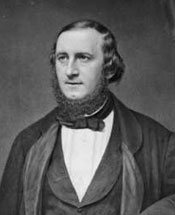 William
Vincent Wallace (1812-1865), Composer, Pianist, Violinist
& Teacher.
William
Vincent Wallace (1812-1865), Composer, Pianist, Violinist
& Teacher.
W. Vincent Wallace was born in Waterford, Ireland in March
1812. He died in the Pyrenees, France in September 1865. His
father, William Wallace was from Ballina, Co. Mayo and
his mother was from Portdarlington in Co. Laois. The father
was a bandmaster attached to one of the local British regiments.
The father was said to have been an excellent musician.
Young Wallace received his first music lessons from his father.
He learned to play the violin and piano, becoming quite accomplished
at both instruments.
The family moved to Dublin in 1825, where young Wallace became
a member of a Theatre Royal Orchestra in Hawkins Street as a
violinist. He also continued his music studying the piano with
William Conran who was an outstanding pianist and with Haydn
Corrie for the organ. Eventually in 1830 he was offered the
job of organist at the Cathedral in Thurles, County Tipperary
along with Professor of Music at a local Convent.
Wallace returned to Dublin some time later where he married
Isabella Kelly, one of his pupils from the Convent in Thurles.
He rejoined the Theatre Royal orchestra in Dublin where he sometimes
took over the leadership of the orchestra.
The Theatre Royal, Dublin at the time was being managed by
the London impresario Alfred Bunn who by coincidence would have
an important influence on Wallace’s future musical career some
years later on.
Wallace was working in the orchestra at the Theatre Royal when
Nicola Paganini, the great violinist visited Dublin in
1831. Wallace was apparently astonished at the playing technique
of the gifted Italian violinist. He apparently afterwards endeavored
to duplicate Paganini’s technique in an effort to improve his
own skills. It was some months after Paganini’s visit that Wallace
first performed his own composition for violin, a concerto which
was no doubt influence by the Italian violinist.
For the next 35 years Wallace’s career and life took on some
bizarre twists and turns around the Globe. It is difficult to
sorts fact from fiction when it comes to some of his reported
personal experiences.
He first decided to live in Australia apparently looking for
a better climate since he suffered from asthma. He departed
Liverpool, England with his wife, Isabella in 1835 arriving
in Hobart, Tasmania in October 1835. It seems that Isabella’s
sister, Alice accompanied them and possibly some other family
members including Vincent and Isabella’s son, said to be two
years old at the time. There is also some evidence that Wallace
and his sister-in-law, Alice may have had an affair during the
voyage. However, generally the sparce amount of evidence relating
to who was in the Wallace party on arrival in Hobart is conflicting,
confusing and frequently unsupported.
During his stay in Australia Wallace organized concerts in
Hobart. He traveled on to Sydney early in 1836 to find that
the Govenor of New South Wales was an Irishman from Limerick,
Sir Richard Bourke who became interested in the Irish
composer’s work. It wasn’t long before Wallace was giving highly
publicized concerts with Bourke as his principal sponsor. This
activity continued for a few years, giving Wallace high visability
in the community and no doubt a good income.
After a failed attempt to establish a permanent Academy of
Music, in Sydney, Wallace found himself heavily in debt and
with no way to repay it. In 1838, now 26 years old he departed
Sydney, with little fanfare, apparently abandoning his wife
and family and setting sail for Valparaiso in Chile which at
that time had important Italian Opera season annually and presumabely
other musical activity. On the way there he stopped off in New
Zealand during which by his own account, related many years
later to the French composer, Hector Berlioz, that he was almost
eaten alive by cannibals!
If we are to believe Wallace’s story he eventually went on
to Chile where no doubt he gave concerts as he did during most
of his travels. He later traveled to Lima, Peru and then to
Buenas Aires and on to Jamaica and Cuba which had extensives
Italian Opera season during the 19th century. Possibly he participated
in the orchestra or as a conductor. In any event by 1841 he
was in Mexico City which also had Italian Opera Seasons and
here he performed as a conductor. He continued on to New Orleans,
Philadelphia, Boston and New York where he became involved with
founding the New York Philharmonic Orchestra.
Throughout this period he continually gave concerts and also
probably did some teaching. He returned to Europe eventually
arriving in London in 1845 where he gave a concert at the Hanover
Square Concert Rooms in May of that year.
Wallace was introduced to the poet Edward Fitzball who
had written various operatic librettos for other London based
composers including fellow Irishman, Michael Balfe. Fitzball
liked Wallace’s proposal for an opera and they set to work on
what would become Wallace’s most successful work, Maritana
which had its premiere at The Theatre Royal, Drury Lane
in November 1845. It gave Bunn an important new English opera
to produce since Balfe was busy on the continent composing a
new work for the prestigeous Paris Opera. Most of the critics
loved the new Wallace opera comparing his outstanding musical
talents to those of his successful countryman, Balfe.
Wallace next appeared in Dublin with a concert version of Maritana
at the Rotunda Concert Rooms with equal success. Sometime
later the composer brought the Drury Lane company to Dublin
to give a full performance of Maritana, which
proved to be virtually as popular as Balfe’s Bohemian Girl
in terms of appeal in the English speaking world throughout
the 19th century. Wallace also created and performed a German
version of it for Vienna in 1848. It was also given in Hamburg
in 1849 and Prague in 1851.
Meanwhile, the English language version of this popular opera
was performed in places such as, New York in 1848, Sydney in
1849 New Orleans in 1876 and Cape Town in 1887, to name a few
of the venues.
The score was also translated into Italian, though it does
not appear that it was ever performed in Italy. However, the
Italian version was given in Dublin in 1877, London 1880 and
New York 1885.
Wallace composed five more operas which saw performances.
None however achieved the fame and success of Maritana.
In 1847 he premiered Matilda of Hungary at Drury
Lane with a libretto by Alfred Bunn. The critics considered
the libretto to be one of the worst ever written.
In 1849 Wallace started traveling again. What
prompted this is not fully known. He first spent time in Brazil
and later went to New York. While in New York he met and married
a pianist, Helene Stoepel, apparentaly considering his earlier
marriage null and void, because he was under age when it occurred
and made to convert to Catholicism! There were two children
from the second marriage. He also took out American citizenship
during his stay in New York.
In 1860 his Lurline had its first
performance at Coven Garden. Dublin saw it in 1861. Lurline
also saw some international performances at Sydney in 1862,
New York in 1869 and with an Italian libretto in New York during
the same season. It achieved good success. There were several
revivals of the opera in Britain at various times, the latest
being in Manchester in 2009 with Richard Bonynge conducting
an orchestra and an international cast. This performance was
recorded with a release date expected later in 2009.
The Amber Witch his fourth opera
was first produced in London in 1861, to a libretto by the critic,
H. F. Chorley. It was liked by the public. However, the opera
did not appear to have any staying power as it had only one
revival. Although Wallace apparently considered this to be his
best work. This was followed by Love’s Triumph
in 1862 and The Desert Flower in 1863. The latter
did have some performances in New York in 1868. Both of these
works appeared to have had bad librettos which did not help.
Wallace also wrote numerous salon pieces for
piano which were published, and which became very successful.
These included, nocturnes, waltzes, polkas and fantasies on
popular Irish and Scottish songs by Moore, Burns, etc. He also
wrote a significant number of songs, probably around 50 or more.
One of these, Why do I weep for thee? he composed in
1849 for the celebrated Irish soprano Catherine Hayes
who was then one of the leading singers in London.
He was an outstanding pianist and violinist. He
spent most of his final years in Germany and France, possibly
because of his second marriage which would not have been acceptable
in Britain in the 19th century, in view of the fact that he
had never been divorced from his first wife who was a catholic.
In his later years Wallace suffered from eye
problems to the degree that he almost went blind. In the mid
1850s he also suffer a heart attack from which he never really
recovered. He eventually went to live in France . He died there
in September 1865. He is buried in Kensal Green Cemetery in
London.
Selected Recordings/Selected Works
Maritana - Complete opera – with
English libretto – 2 CD Set with the RTE Concert Orchestra (Dublin)
conducted by P. O’ Duinn with an international cast.
NAXOS – CD (2) 8.554080-1
Lurline - complete opera – with
English libretto – 2 CD Set with an international cast and orchestra
conducted by Richard Bonynge
Victorian Opera Northwest: - Planned release - November 2009
www.victorianoperanorthwest.org.uk
The Power of Love – British Opera Arias
(18 total tracks with 6 tracks of arias from Wallace
operas; 12 by other composers including Balfe and Sullivan).
Australian Opera Orchestra conducted by Richard Bonynge with
Deborah Riedel, soprano Melba Records CD (1) 301082
The Meeting of the Waters - Celtic Fantasies
for piano - selection of Wallace Irish (and Scottish)
fantasies for piano including The Minstrel Boy, The Meeting
of the Waters and The Last Rose of Summer – CD (1)
-17 tracks.
Pianist – Rosmary Tuck
CALA CD 88042
To My Star – Celtic Romances for piano
- selection of 15 romantic Wallace piano pieces including, a
Waltz, Etude, Nocturne, Polka and Mazurka and perhaps one of
his most famous compositions, La Cracovienne, composed in New
Orleans in 1842. CD (1) – 15 tracks.
Pianist, Rosemary Tuck.
CALA CD 88044
Bibliography
- Music in Britain: the Romantic Age 1800-1914 - Editor,
Nicholas Temperley – 1988
- New Grove Dictionary of Opera – Editor, Stanley Sadie
– 1992
- A History of English Opera by E. W. White – 1983
- The Rise of English Opera, by E. W. White – 1958
- English Opera from 1834 to 1864, by George Biddlecombe
– 1994
- Vincent Wallace – A Vagabond Composer by Robert Phelan
– 1994
- Evenings with the Orchestra (includes discussions
with Wallace), by Hector Berlioz – 1973
- Dictionary of Music and Musicians (1450-1889), edited
by Sir G. Grove – 1889
Catherine Hayes (1818-1861), Soprano,
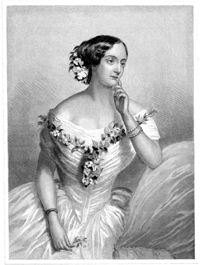 Catherine
Hayes was born in Limerick in October 1818. She died at Lewisham
(London surburb) in August 1861. Her father, Arthur W. Hayes
was a bandmaster in the local militia. Her mother was Mary (Carroll)
Hayes. The mother was a servant working in the household of
the Earl of Limerick. There were two children, Henrietta
who was born in 1816 and Catherine, in 1818. The father abandoned
the family, for whatever reason around 1823, never to be heard
of again.
Catherine
Hayes was born in Limerick in October 1818. She died at Lewisham
(London surburb) in August 1861. Her father, Arthur W. Hayes
was a bandmaster in the local militia. Her mother was Mary (Carroll)
Hayes. The mother was a servant working in the household of
the Earl of Limerick. There were two children, Henrietta
who was born in 1816 and Catherine, in 1818. The father abandoned
the family, for whatever reason around 1823, never to be heard
of again.
Catherine was born with an innate musical talent and a beautiful
soprano voice. Through a series of events she was “discovered”
by the Anglican Bishop of Limerick, the Reverend Edmund Knox
while singing in the Earl of Limerick’s garden. The Bishop’s
palace was next door to the Earl’s home. With the Bishop’s help,
Catherine took vocal and musical lessons initially in Limerick,
then in Dublin with the vocal teacher and coach Antonio Sapio.
With Sapio’s help a series of concerts are arranged at the Rotunda
Concert Rooms in Dublin. After these events her career developed
significant momentum.
One of these concerts in January 1841 features the renowned
pianist Franz Liszt, then 30 years old and on his first visit
to Ireland and the British Isles. Catherine shares the same
stage as Liszt, singing two arias. The conductor for the occasion
was the young Louis Lavenu, a London born composer and ‘cellist.
Catherine and Lanvenu’s future would be intrinsically entwined
professionally. Later in the year she attends her first opera,
Bellini’s Norma, with the remarkable soprano Giulia
Grisi in the title role. The young vocal student decides
she wants to follow in Grisi’s footsteps. Sapio arranges an
audition for her with his friend the great basso, Luigi
Lablache who was also in the performance. Lablache recommended
that she go to Paris to study with Manuel P. Garcia the eminent
vocal teacher of the time.
Having gained her sponsor’s approval the young soprano and
her mother arrived in Paris in October 1842. They took lodgings
with the Limerick born pianist and teacher, George A. Osborne
(see above) and his wife Lucy. Osborne sometime later featured
her as a soloist in one of his concerts.
Shortly after arrival Catherine commenced study with the famous
singing teacher, Manuel Garcia, brother of the renowned singers,
Maria Malibran Garcia and Pauline Viardot Garcia.
After almost two-years of study and at Garcia’s direction early
in 1844, Catherine and her mother departed for Milan to meet
with Felice Ronconi a member of a distinguished family
of musicians for operatic coaching.
The young Irish soprano and her mother arrive in Milan at a
time when the Giuseppe Verdi was emerging as the next
great Italian operatic composer. Verdi’s only pupil and future
assistant Emanuele Muzio also arrived in Milan around
the same time as Catherine and her mother. Destiny was to link
Catherine Hayes and Muzio artistically.
After concerts in the home of Giovanni Ricordi (founder of
the Ricordi music publishing empire), the young soprano’s career
takes off dramatically. She makes her debut at the Italian Opera
in Marseilles, with first night nerves and ultimately great
success. Bartolomeo Merelli, famed director of La Scala,
Milan offers her a contract for his new opera season. Her fame
spreads quickly— she’s in demand in Venice at the great La Fenice
opera house. The well established composer, Federico Ricci
and others compose operas for her to premiere at La Scala, and
La Fenice.
She next traveled to Vienna— to sing her most renowned role,
Lucia di Lammermoor. Her performances there are attended by
Habsburg Royal family in full costume and with a large entourage
at the Karntnertortheter (Royal Court Theatre). The famous
soprano Jenny Lind, is also singing there at another theatre.
The two singers’ paths would cross many times in the years ahead
and particularly in England and America, where they became good
personal friends.
Back in Milan, Catherine continues to be the star at La Scala.
During this period she is paired at La Scala with a new tenor—
in her most famous role, Lucia di Lammermoor. The tenor is an
elegant Englishman, Sims Reeves with an exciting voice,
good musical talent and a handsome presence. Their performances
together at La Scala capture the headlines with rave reviews.
They are the same age. It is the beginning of what would become
an intimate relationship later in London and Dublin.
Giuseppe Verdi shows an interest in her for one of his new
operas, I Masnadieri. However, Jenny Lind is selected
and she creates the opera in London in July 1847. One month
later, Catherine is coached for the opera by Verdi’s assistant,
Emanuele Muzio. She creates the Italian premiere at Verona in
December 1847. By now her fame has also reached London where
her La Scala performances are reported on regularly in the musical
press.
Early in 1848, revolutions break out in Milan and other places
in Europe. La Scala shuts down for the rest of the year. Catherine
and her mother leave the city for Florence where she’s engaged
to sing by another important impresario, Alessandro Lanari.
Sometime later in Genoa she is approached by a representative
from the Royal Italian Opera, Covent Garden, London,
who offers her a contract for the season.
Early in 1849 Catherine, her mother and sister arrived in London.
It is their first visit ever to London. Her Limerick friend
George Osborne and his wife are now living there also, because
of the political unrest in Paris. She make her operatic debut
at the Royal Italian Opera at Covent Garden with much success.
Later in the year she performs at Buckingham Palace for Queen
Victoria, Prince Albert and 500 guests, along with a small group
of leading Italian singers. She is greatly applauded and after
a evening of Italian operatic arias and duets she is asked for
an encore by the Queen— the young Irish soprano obliges with
a song, Kathleen Mavourneen. The next day the Queen records
in her diary how pleased she was with the young singers performance.!
Catherine returned to Dublin in November 1849 to perform in
Lucia di Lammermoor and other roles. She was greatly
praised by the critics. During this time In Ireland she also
performance in opera in her home town of Limerick and in Cork—
to sold out houses. For the next two years Catherine performes
in opera and in concerts throughout Britain and in Ireland.
In 1851 she was invited to Rome to sing in Donizetti and Bellini
operas there. Her performances caused such a furore that in
recognition she was awarded a Diploma from the Academy of
Santa Cecilia, in Rome— a very special honor. Catherine
afterwards returned to London to take up her concert schedule.
In September 1852 she departed for New York. Her mother and
sister and a small party of singers accompanied her along with
her friend, Louis Lavenu as music director. For the next
two years Catherine travels up and down the east coast of America
giving concerts from New York to Montreal, from Boston to New
Orleans. She travels on the Mississippi River Boats performing
in the river town along the way from Baton Rouge up to Cincinnati
and on to St. Louis, Chicago, Detroit, Cleveland and Pittsburgh
and back to upstate New York for more concerts in Buffalo and
Toronto.
On her return to New York city she met a young American, William
Avery Bushnell who worked for the great American showman,
P. T. Banrnum and who has assisted with the management
of Jenny Lind’s tour of America the previous year.
Bushnell takes on the role of Manager of the Hayes group, setting
up a tour of California under the management of P. T. Barnum.
The group arrives in San Francisco in November 1852, having
traveled there via Panama. After several concerts in San Francisco,
she travels to the gold fields and sings concerts for the diggers,
many of whom are Irish. She is a sensation, so much so that
tickets to her concerts are put up for auction by Bushnell and
individuals bid as high as $1100 for a choice seat. She later
travels to Lima, Peru where she sing with a visiting
Italian opera troupe after which she goes to Santiago in
Chile for concerts. Her mother, Bushnell and others travel
with her. She returns to San Francisco many months later to
give more performances.
Throughout these years Catherine Hayes always included the
songs of Thomas Moore in her concerts along with operatic arias.
However, it was the song, Kathleen Mavourneen by
Frederick Crouch that became her signature piece.
In July 1854 she traveled to Australia stopping in Hawaii
(Sandwich Islands) for a concert. In Honolulu her concert was
attended by King Kamehameha of Hawaii who said that he
wasvery impressed by this “strange singing lady.”
Her arrival in Sydney is hearlded with great emotion. She is
the first important European opera star to visit the remote
colony. Over the next two years she sings in opera and concerts
in Sydney, Melbourne, and Adelaide before traveling to Calcutta
in India, where she entertains members of the British Army (many
of whom are Irish) and their wives. She next goes to Singapore
and Java. Returning in June 1855 to Melbourne and Sydney she
continues with more performances. She also visits the gold fields
in Bendigo before going on to Tasmania for concerts.
In August 1856 Catherine returns to Britain, a very rich woman
of 38 years having traveled around the world in pursuit of her
career. She is accompanied by her mother and William A. Bushnell,
her manager. Later in the year she completes a concert tour
of Britain and Ireland, after which she appeared in opera in
Dublin, Limerick and Cork. She and Bushnell marry in October
1857 in the fashionable St. George’s Church in Hanover Square,
with her sister, mother and the Osbornes present.
A year later Bushnell died while they are in Biarritz, France.
Catherine eventually goes back to singing. For the next two
years she did a concert tour of Britain and Ireland. In August
1861 she suffered a stroke and died a few days later at the
age of 42. Her mother and sister were at her bedside. She is
buried in Kensal Green Cemetery in London.
Catherine Hayes’ career was remarkable in many ways. She was
not only the first Irish woman to become famous as an opera
singer but she in effect became Ireland’s first Ambassador as
everywhere she went around the world in the mide 19th century
she sang Irish songs as part of her concert programs. The critics
in Milan, Rome, London, Dublin, Belfast and throughout America,
Canada and Australia loved her. She rarely received a bad review.
On hearing of her death newspapers in Italy, Britain, Ireland,
America and Australia ran extensive obituaries about her great
loss.
Selected Recording
Unfortunately there are no recordings of Catherine Hayes’ voice
as she lived long before recordings were first invented in the
1890’s.
Another Limerick born soprano Suzanne Murphy of the 20th century
has recorded some of the songs that Catherine Hayes sang, including,
Kathleen Mavourneen and The Last Rose of Summer along with 18
other classical Irish songs.
There is an Isle – Suzanne Murphy, soprano -
CD(1) 00000?
Historic: Adelina Patti - sings, Kathleen Mavourneen
and The Last Rose of Summer and 14 other songs and arias
recorded in 1905 – when Patti was 62 years old. This is a very
primitative recording.
Pearl GEMM CD 9312 (1)
Selected Bibliography
- Catherine Hayes – The Hibernian Prima Donna, by Basil
Walsh – 2000
- Queens of Song – Celebrated Female Vocalists, by
Ellen Creathorne Clayton – 1858
- New Grove Dictionary of Opera – Editor, Stanley Sadie
-1992
- Dublin University Magazine - November 1850
- Sims Reeves – Fifty Years of Music in England, by
Charles E. Pearce – 1924
- My Jubilee: Fifty Years of Singing, by Sims Reeves
– 1889
- Struggles and Triumphs: Forty Years of Recollections,
by P. T. Barnum – 1873
- Entertaining Australia, by Katherine Brisbane – 1991
- Verdi and His Major Contemporaries, by Thomas G.
Kaufman – 1990
- The Irish in New Orleans, by Earl F. Niehaus – 1965
- The Irish Sketch Book, by William M. Thackeray –
1860
www.catherinehayes.com
www.catherinehayes.ie
© BASIL WALSH basilwalsh@msn.com
(Copied with permission)

